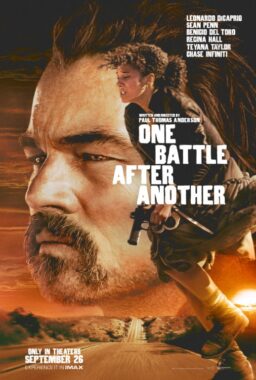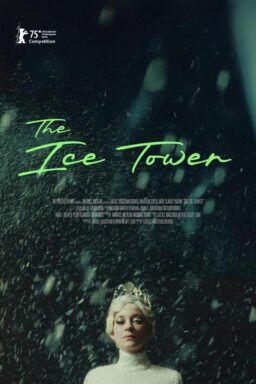or: as promised, an explication of why I chose these pictures and sounds:
I. Titles: Chad Feldheimer gives the invocation (Brad Pitt in Joel and Ethan Coen’s “Burn After Reading“).
II. Prologue: Hannah Schygulla, Goddess of Fassbinder, Animating Spirit of Cinema, awakens to look us in the eye and set the movie-countdown in motion. (From “The Edge of Heaven.” I tweaked it to begin in black and white and fade into color.)
10. “The Fall“ (Tarsem Singh; comedy, Western/Eastern, fantasy, adventure). “The Fall” is a tall tale about storytelling and the movies — the shadows that flicker on screens and the images that excite our imaginations. It is a tale told by an injured American stunt man, bedridden in a Los Angeles hospital circa 1915, and filtered through the consciousness of a little Romanian girl with limited English and a broken arm. She craves the story as much as he craves morphine. He becomes a too-human god, creator and destroyer of worlds; she becomes hooked.
The shot quoted above is a piece of shadowplay from the opening sequence — the reverse-image of a bridge and a locomotive imprinted on the surface of the water. The white specks are men in the water. A figure on the shadow-bridge tosses them a rope, which becomes a thread linking the positive and negative sides of the picture in the same shot. The rope itself snakes out in shadow (in the foreground, illuminated from behind, not cast on the water) until the tangled coil appears, falling through sunlight, set off against the shadow of a pillar of smoke, and the “tail” is swallowed up by the black of the bridge. “The Fall” accomplishes astounding feats like that throughout.
9. “Shotgun Stories“ (Jeff Nichols; contemporary Southern Gothic). I didn’t have access to my DVD of Jeff Nichols’ debut feature when I made this, so I didn’t have as many choices available to me as with some of the other films. What I picked was a reverse-angle shot of the three Hayes brothers standing in a doorway — a horizontal anamorphic composition through a vertical frame — which I then slowed down so it would last long enough for you to look at it. This is the moment that sets the story in motion. They are being told by their mother that their father is dead. Michael Shannon, front and center, is Son, the eldest. The others are Boy (Douglas Lingon, right), who casts a glance across the background of the frame at Kid (Barlow Jacobs, left).
8. “Chop Shop“ (Ramin Bahrani; neo-neorealist drama). The opening shot is shown here in its entirety. I’ve written about it before, and I find it subtly glorious every time I see it. First, notice the composition: Men and boys standing and waiting, forming a “V” (especially as the guy on the left moves into position) pointing to the youngest and smallest, who will become the movie’s main character. Where are they? Could be just about any Latin American country. Something off-screen catches their attention. They raise their arms and call out in Spanish. As a truck pulls up to the curb on the left, the camera pans over (not telling you where to look, but following their interest) and a guy gets out, speaking in Spanish — and unmistakeable Noo Yawk English. In a split second, and just as naturally, the camera follows the truck guy and we glimpse a sign in the distance for a self-storage facility, also in English. We know we’re in the USA.
The man tells the kid he doesn’t need him today. The kid tries to argue, but the man needs only two workers. As they get into the truck, the kid slips into the shot, and over the tailgate, into the bed of the truck. It pulls away and we see a steel-girder bridge/off-ramp in the early morning light, with traffic signs flashing above it. A beautiful, atmospheric, economical introduction to a gray-market, immigrant-driven story of the American Dream set in the industrial tangle of body shops known as the Iron Triangle (Willets Point, Queens), in the shadow of Shea Stadium.
7. “Still Life” (Jia Zhang-ke; romantic/industrial comedy). Jia is known for his amazing, deliberate camera movements, and you could view this shot is a more self-conscious variation on the previous one (from “Chop Shop“). “Still Life” takes place in an inside-out universe of crumbling buildings and rising water, where everything is transitory and permeable. I don’t know how to describe the delights this image provides, a simple movement from right to left across a room, following the gaze of a man standing at a window in hopes of getting a better cell phone signal. Sounds from beyond the frame seep into our perception (children playing? screaming? thunder?). And we see, incongruously… frames within frames beyond frames, worlds within worlds. WTF?
6. “Let the Right One In“ (Tomas Alfredson; tweener romantic comedy/horror). This is just a selection from the middle of the shot. A boy with a knife trudges through the snow toward the camera. He challenges someone at the left, out of frame, who is incorporated into the shot and turns out to be… a tree. He threatens and stabs the tree, a stand-in for the kids who who have been bullying him. And then reality makes a pivot. The camera curves (tenderly?) around the tree and brings into view a girl standing on a platform where, earlier in the same shot, there had been no girl: the beginning of a deathless friendship.










